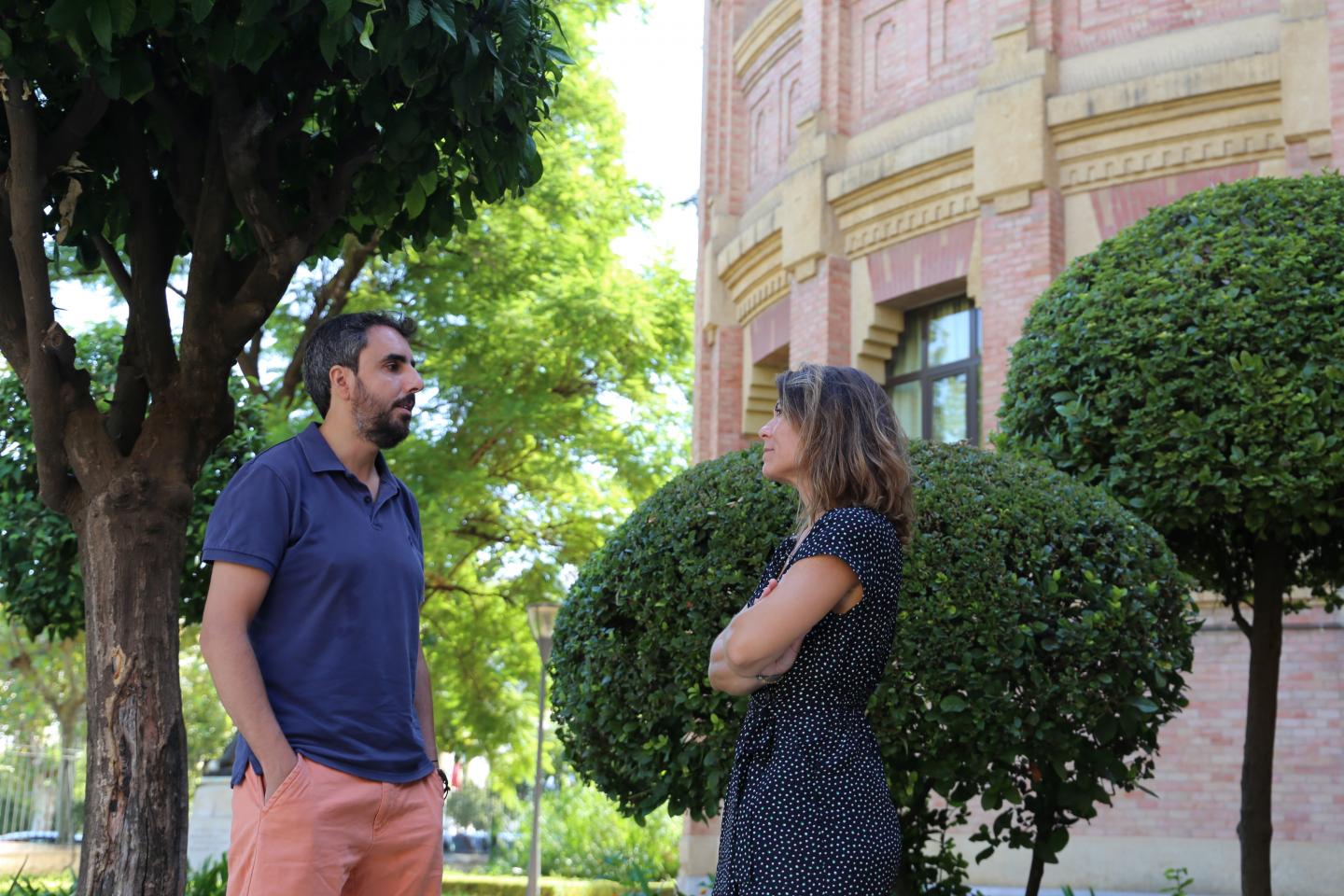
Credit: University of Córdoba
In line with the fight against climate change and the search for a sustainable future, the idea appears of a future society based on hydrogen used as a fuel. This biofuel of the future could be what cars and engines run on (they actually already do), but without pollution and the issue of batteries, since it is much easier to store than electrical energy.
In order to bring that future closer, a team from the Biochemistry and Molecular Biology Department at the University of Cordoba has been searching for ways to increase hydrogen production by using microorganisms, specifically microalgae and bacteria.
In this vein, researchers Neda Fakhimi, Alexandra Dubini and David González Ballester were able to increase hydrogen production by combining unicellular green alga called Chlamydomonas reinhardtii with Escherichia coli bacteria. The teamwork of the algae and bacteria resulted in 60% more hydrogen production than they are able to produce if algae and bacteria work separately.
When alga works on its own, it produces hydrogen via photosynthesis whereas bacteria make hydrogen via sugar fermentation. The key to the synergy between algae and bacteria is acetic acid. This acid, in addition to providing the smell and taste of vinegar, is separated by bacteria during hydrogen production. Accumulation of acetic acid where the bacteria is found is seen as a problem: it causes the fermentation mechanism to stop and, therefore, so does its hydrogen production. That is where the microalga comes into play, as it takes advantage of the acetic acid in order to produce more hydrogen. Thus, the microalga benefits from what the bacteria does not want and together they become more efficient.
The potential of the algae-bacteria combination has been proven and opens the doors to its being used in industry since the sugar added for bacteria fermentation in the lab can be transferred to waste in the real world. In other words, the relationship between algae and bacteria could use industrial waste and dirty water to produce hydrogen and decontaminate at the same time.
The combination of bioremediation (the use of microorganisms for decontamination) and hydrogen production in order to be used as a biofuel brings sustainability full circle in a society that is ever more present.
###
Fakhimi, Neda; Dubini, Alexandra; Tavakoli, Omid; Gonzalez-Ballester, David. (2019). Acetic acid is key for synergetic hydrogen production in Chlamydomonas-bacteria co-cultures. Bioresource Technology. 289. 121648. 10.1016/j.biortech.2019.121648.
Media Contact
Elena Lázaro Real
[email protected]
Related Journal Article
http://dx.





